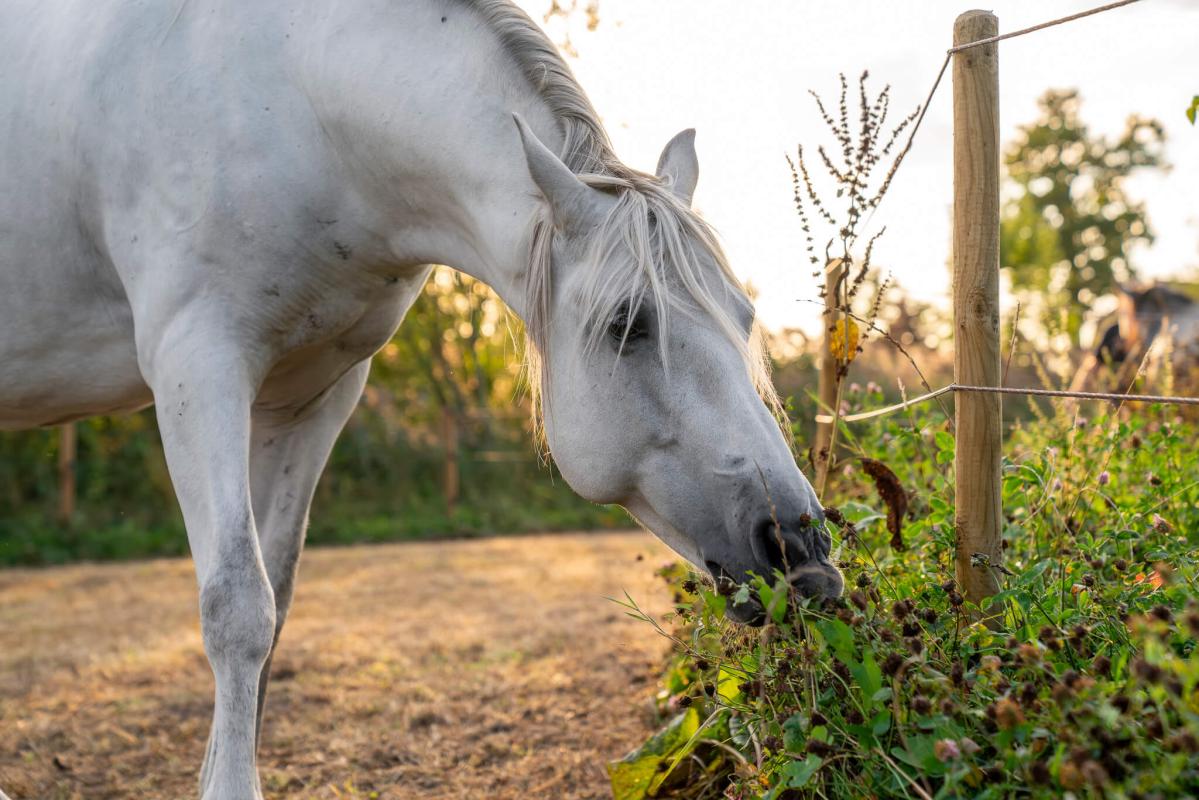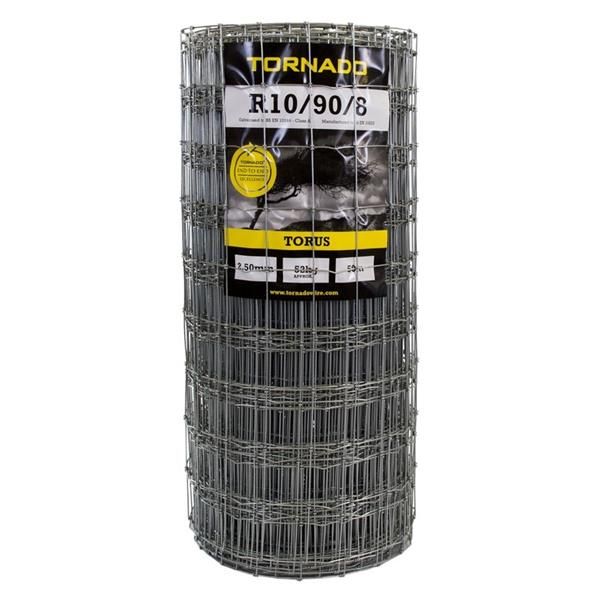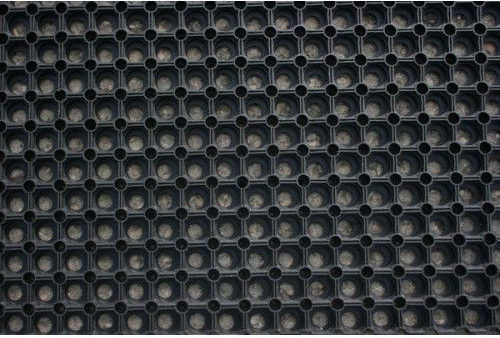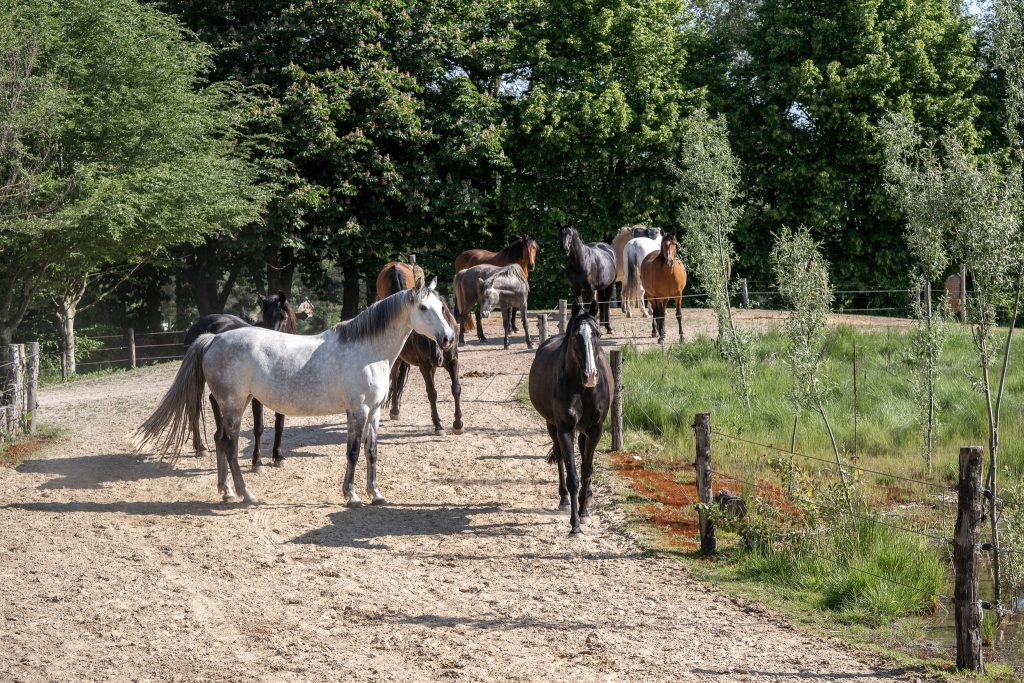
Equestrian track grazing systems, also known as paddock paradise, have become increasingly popular among horse owners looking to provide a more natural, enriching, and sustainable lifestyle for their horses. Whether you're managing a large livery yard or a small private setup, establishing a track system can improve horse health, promote better pasture management, and reduce overall maintenance time and costs.
In this blog, we’ll discuss the basics of creating a track system and explore its key benefits for horses and their owners for pasture management.
What is an equestrian track system?
A track system is a loop or path that runs around the perimeter of a field or paddock. Instead of giving horses access to a large, open pasture, they are encouraged to move continuously around the track, mimicking their natural foraging and roaming behaviour. The width of the track can vary depending on available space, and the surface can be adapted to suit different weather conditions and hoof health needs.
How to create a track system
1. Design the Layout
Start by mapping out the available space. Most track systems run around the edge of an existing field. Aim to create a continuous loop that connects to essential resources such as:
- Water points
- Hay feeding stations
- Shelters or shade
- Natural obstacles (logs, small slopes, etc.)

Adding variety to the track with changes in terrain and enrichment zones encourages movement and stimulation.
2. Fencing for horses
Use electric fencing, wooden posts, or mesh to define the boundaries. The track should be safe and secure, with fencing set up to prevent horses from entering the inner grazing zone except when you choose.
3. Surface and drainage
To ensure year-round usability, consider reinforcing high-traffic areas (near water and hay stations) with hardstanding or all-weather surfaces such as:
- Gravel with membrane
- Rubber mats
- Sand or woodchip

Proper drainage is essential to prevent mud build-up and reduce hoof problems.
4. Pasture Management
The central section of the field (inside the track) can be used as a rotational grazing area, hay production, or left to rest. This approach improves pasture longevity and biodiversity.
5. Enrichment Elements
Introduce logs, mounds, puddles, or mineral licks along the track to encourage natural behaviours and reduce boredom.
Benefits of a track system
1. Promotes natural movement
One of the greatest advantages of a track system is how it encourages horses to move more freely throughout the day, mimicking the way wild horses would roam in search of food and water. In a traditional paddock, many horses tend to stand around in one area, which can lead to stiffness, poor circulation, and reduced fitness. With a well-designed track, resources such as hay, water, and shelter are spaced out strategically to encourage walking. This consistent low-impact exercise supports muscle tone, joint flexibility, and overall physical wellbeing. Horses that are older, recovering from injury, or not in active work can especially benefit from this gentle form of movement that keeps them limber and healthy.
2. Supports weight management
Managing a horse’s weight, especially for native breeds, ponies, or easy keepers, can be a real challenge. Traditional pasture turnout often provides too much access to rich grass, increasing the risk of laminitis, metabolic issues, and obesity. A track system naturally limits this access by restricting horses to the perimeter, reducing their grass intake while still giving them freedom of movement. The increased activity level also helps burn calories and maintain a healthy body condition without the need for intensive exercise routines. For horses on restricted diets, this is a more natural and less stressful way to control weight compared to prolonged stabling or grazing muzzles.

3. Improves hoof health
Many horse owners have reported significant improvements in hoof condition after switching to a track system, especially those managing barefoot horses. The constant movement across varied terrain helps stimulate blood flow to the hooves, which is essential for growth and strength. Introducing different surfaces such as gravel, grass, sand, or rubber, can help naturally wear down the hoof wall, reduce flaring, and promote a healthier hoof structure overall. Hardstanding areas also encourage horses to harden their soles, reducing the risk of thrush and soft foot problems often caused by prolonged exposure to wet, muddy ground. The more natural hoof wear and improved circulation can reduce or even eliminate the need for frequent trimming or shoeing.
4. Encourages social interaction
Horses are herd animals by nature, and a track system fosters better social dynamics by allowing them to move together as a group, interact more frequently, and establish a natural pecking order. Unlike isolated stabling or restricted paddocks, track systems give horses the space and opportunity to engage in play, mutual grooming, and communication. This enriched social environment helps reduce anxiety, boredom, and behavioural issues like weaving, cribbing, or fence walking. Horses that are emotionally content tend to be healthier overall, with improved digestion, reduced cortisol levels, and fewer stress-related health problems. For multi-horse environments, track systems can also help reduce conflict by giving horses room to avoid each other when needed.
5. Environmental and pasture benefits
By keeping horses off the central pasture most of the time, the inner grazing zone is given time to rest and regenerate, leading to better grass quality and improved soil health. This rotational style of grazing also prevents overgrazing and allows wildflowers and other beneficial plant species to thrive, enhancing biodiversity. Erosion and poaching (muddy, compacted areas) are minimized, which protects your land for the long term. Manure management becomes easier too—horses often develop latrine areas along the track, concentrating droppings in fewer places and making daily clean-up more efficient. The result is a more sustainable and environmentally friendly way to manage equine turnout.
6. Cost and time efficiency
Although the initial setup of a track system may involve costs for fencing, surfacing, and layout design, many horse owners find it pays off over time. Reduced vet bills due to healthier weights, fewer hoof problems, and lowered risk of laminitis or colic can lead to significant savings. The improved pasture management also means less reseeding, fertilizing, and repairing damaged fields. Additionally, maintenance tasks like poo-picking, topping, and moving electric fencing are simplified or reduced entirely. Once established, a track system can streamline your daily routine, freeing up time and energy while still providing an enriching, healthy environment for your horses.
